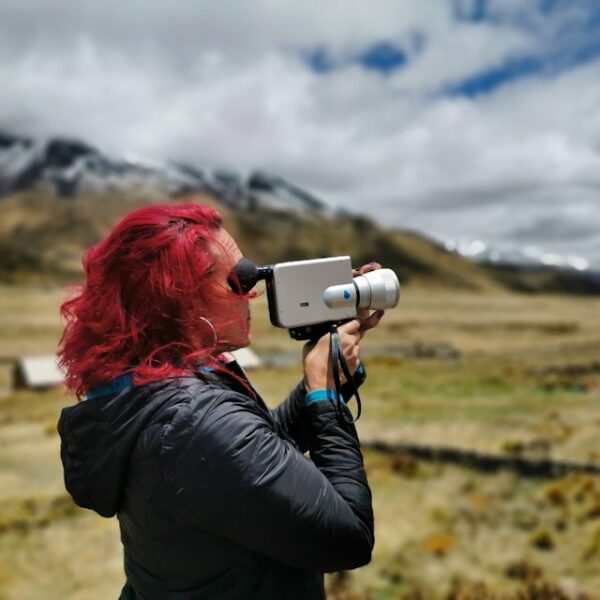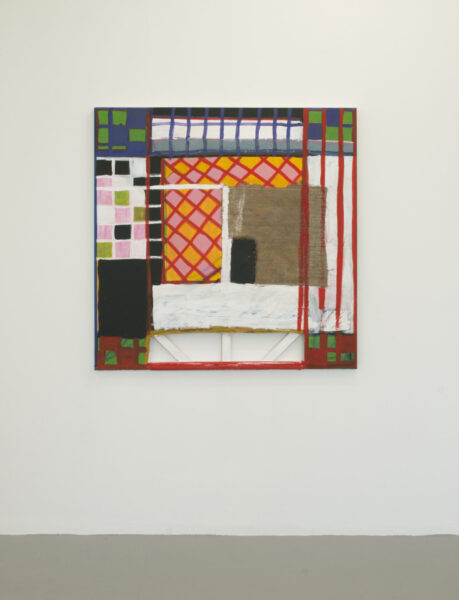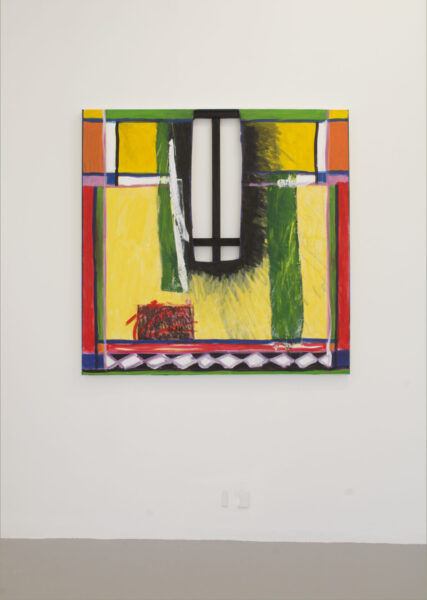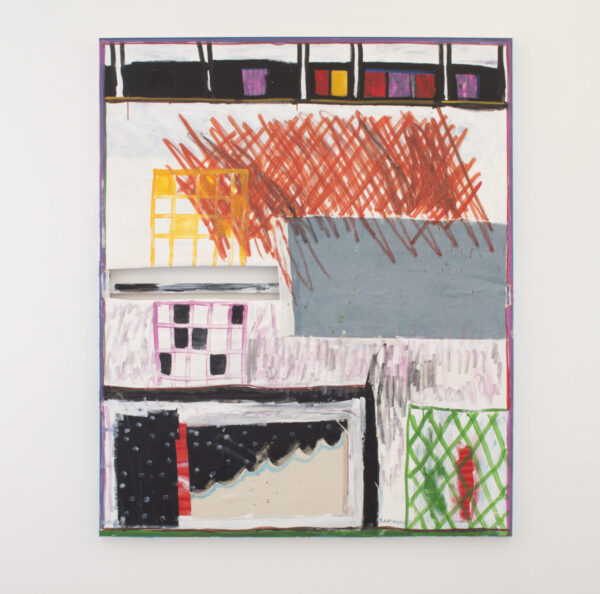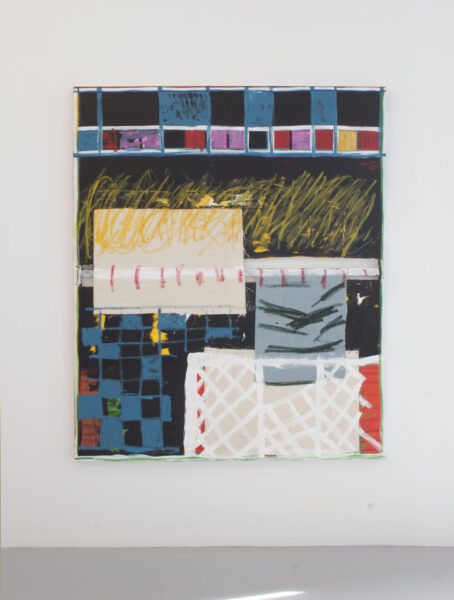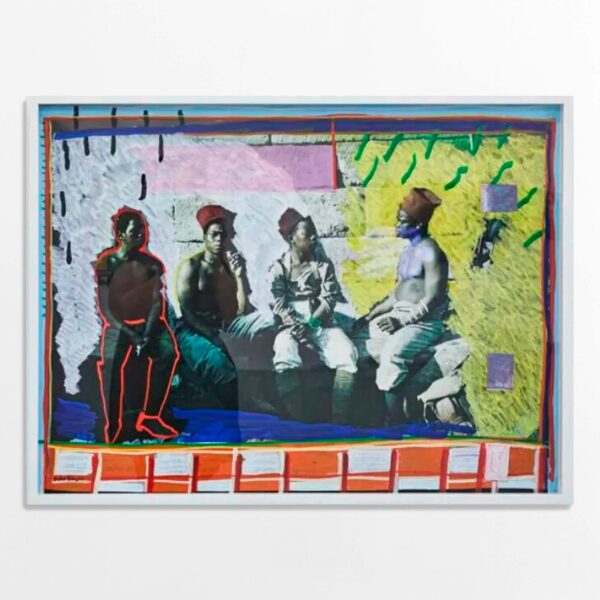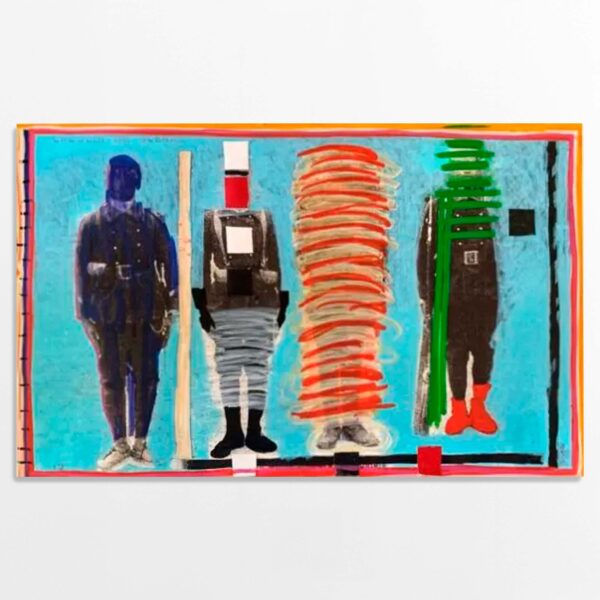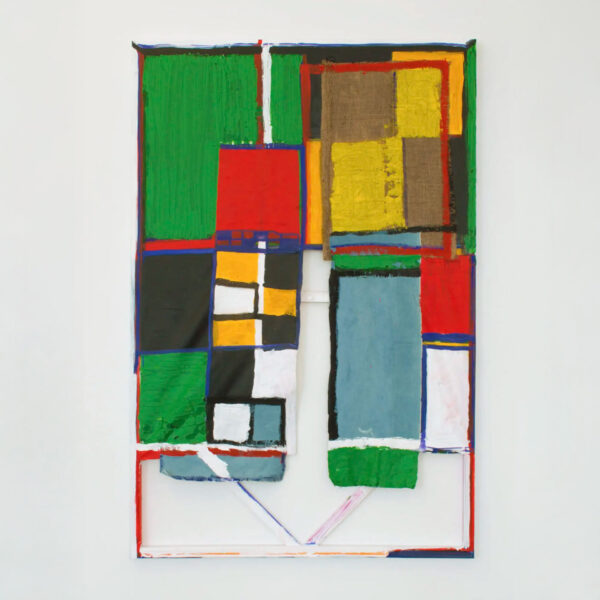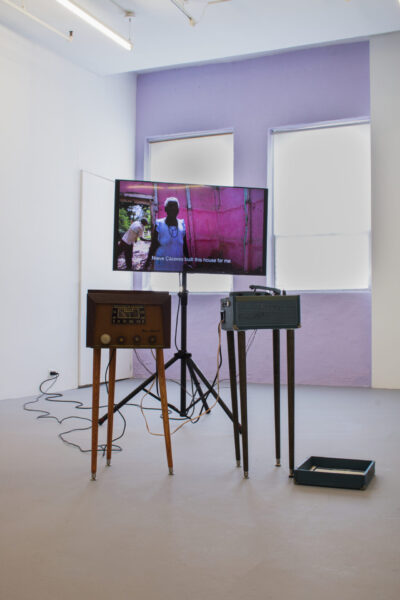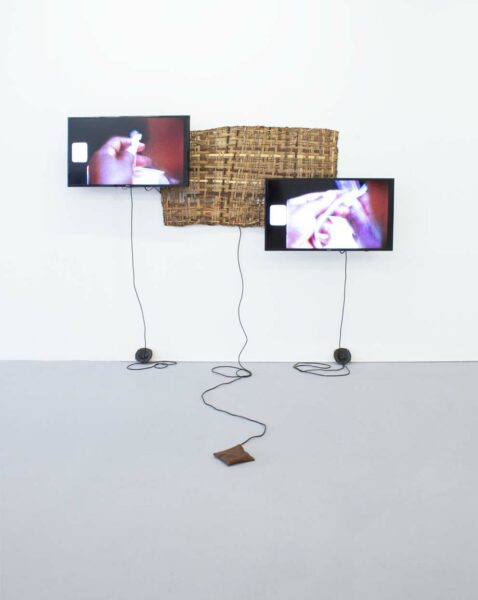




Memory Palace
Both Gelis and Dieng Yancine embark on a historical journey that ignores chronological linearity to make room for an emotional interpretation of their personal memories, as well as the memory of the communities to which they belong. Both artists, nourished by the narratives of the colonial past, hold on to exercises of memory that connect them with their contemporaneity and at the same time allow them to draw very original perspectives on the way they represent the contradictions that arise from the counter-positions between modern/traditional, ancestral/contemporary, popular/academic. In this exhibition we seek to leave on the table a discussion about the models of representation that have traditionally been granted to artistic production in the periphery of the centers of power.
Very close to Cartagena, the most visited Colombian destination by international elites, is San Basilio Palenque, known as the first free town in the Americas. Unlike the luxury of the walled city, where the jet set strolls through the stone streets built for the enjoyment of virelles and rulers, Palenque is an earthen village, clandestinely armed in the bush by the women and men who escaped from slavery in the Colombian plantations and mines. Palenque remains an example of resistance. Governed by its own social logics, administered by the Maroon guard, its inhabitants guarantee the transmission of the knowledge and customs inherited from the founding ancestors. One of the fundamental axes of this social structure are the rituals and mystical celebrations that are held before the most important events in the community. The Lumbalú, whose origins date back to Africa, can be defined or understood as a bridge that is built between the material world and the invisible world to accompany the souls to transcend.
This work of mystical engineering is possible thanks to the music and voices of the elders of the community. These magical songs are composed especially for each soul in particular, and narrate the feats and qualities in life of the people who lived there. In the work Bajereque, Alexandra Gelis, portrays with acute sensitivity, the violence generated by the change in the traditional paradigms of the grandparents of Palenque and the brutality with which development imposes an unnecessary modernity. Because the houses in Palenque are built in Bajereque, an engineering and architectural technique brought from the motherland, the inhabitants of Sam Basilio created an ecosystem that organically adapted to their landscape and allowed them to survive the extreme temperatures of the Colombian coastal tropics. Recently, the cool houses built with this millenary material have been demolished and replaced by concrete and tin buildings. The elderly, unable to resist the tyrannical laws of the state, whose interests are far removed from the welfare of the community, watch helplessly as their houses are eaten away by monstrous machinery.
This scenario, sublime as death itself, raises an unresolved issue of the colonial past that is universally shared. From the funeral dirge of a grandmother to her house about to be destroyed, Gelis unveils the poetic and symbolic con-tent of the elements of the house, which under the westernized gaze are simply constructed as building materials. What for the old woman is a sacred space, the little house where her memories and the spirits of the natural elements used in its construction dwell, is in the dominant eyes, pure garbage. In this way, the artist demonstrates how the paradigms of colonizing thought continue to impose themselves on the lives of those who try to exist under the shelter of the harmonious rules of nature and not under the capricious laws of men. The issue of technologies is a concern that transversely crosses the practice of Gelis, who tries to draw connections and parallels between modern technical and electronic knowledge, with the original and millenary technologies that refuse to disappear. This work of visibilization of the traditional practices of the communities is manifested in the piece Estera (2015-2016). Among the most valuable medicinal practices in Palenque, pediatrics is fundamental for the health of the whole community. There are few healers who preserve the knowledge of the plants and communicate with their spirits.
In Alexandra’s video of master mat weaver Alejandro Herrera, they put into practice the master’s technical skills using the medicinal plants typical of local medicine. Thus, the mat, which is basically a thin mattress, takes on a ritual sense as it generates a sacred space in which children are laid on it to balance the forces of nature and ensure the health of the individual. This exercise in which botanical and artisanal knowledge go hand in hand, allowed the artist to communicate with the community to whom these practices are becoming increasingly alien. When modern western medicine systematically imposes its methods, traditional science loses its power and the knowledge that nourishes it passes into the realm of the magical or marvelous. In the video installation Estera, Gelis confronts two parallel narratives. On the one hand, the history of the practical use of traditional medicine and its importance in the community, and on the other, the urgency of young people to adapt to a modern world that constantly attracts them. Dieng Yacine’s work references the memories of his childhood in his native Senegal.
His visual constructions are inspired by both the International Style or Bauhaus movement as well as the local vernacular of Senegal’s “national style” of Modernism. Léopold Sédar Senghor, the first President of Senegal, who was a cultural theorist and poet, developed the vision for the tenets that would define Senegalese architecture, a style he called “asymmetrical parallelism” which he described as “a diversified repetition of rhythm in time and space”. His theories sought to try and rethink the European history that was imposed through colonization and instead chart a new course for artistic expression which was driven by the black African experience. Dieng Yacine’s paintings then embody the amalgam of these two related but divergent approaches to building in the modern world. Akin to combining two differing ideologies—the African and the European—he also utilizes two different techniques, the additive and the deconstructed. Dieng Yacine’s painted and collaged elements on top of the canvas are related to the painterly chromatic grids of Stanley Whitney. This geometry is often fractured by intervening, expressionist markings that overlay the more rational fields of color beneath. These marks have the free form autonomy that is fundamental to jazz and creates parallels to the gestures in Basquait’s varied approach to making work. The color palette and rhythms present in Dieng Yacine’s work is uniquely his own, however, fueled by the memory of his land, a homage to his people conjured by a trance like state that is achieved during his studio practice.
Through music and automatic gesturing, the artist creates a path inwards, guiding us through his memories, reconstructing landscape of his childhood. While his painting and collage seeks to create a representation of architecture on the surface of the canvas his paintings become structures themselves through a technique of cutting away large sections of the canvas and then revealing the stretcher bars beneath. He then paints the stretchers, erasing the traditional idea that this skeletal framework serves the work only in an invisible capacity but, instead draws allusions to the very subject of his paintings. The works become sculptural, like the buildings themselves that are catalyzed deep into his mind, a place scientists often refer to as a “memory palace.” These cuts take on a similar tack to Lucio Fontana’s slashes, seeking to allow the viewer to consider what may lie beneath what is seen. Visually, the large sections of absence, look like the Joan Miro’s “Anti-paintings” who burned away the center of canvases, laying bare the wall beyond the plane of the canvas—creating anew through the process of destruction.
For Dieng’s this act of removing sections of canvas becomes an acute comment on the racial void present in art history and in a larger perspective, a social critique on the lack of representation of non-white people in the structures of power. The remaining canvas hangs from the its support almost like a flag from a pole, reclaiming this territory to chart its own new historical future. Both Gelis and Dieng Yancine embark on a historical journey that ignores chronological linearity to make room for an emotional interpretation of their personal memories, as well as the memory of the communities to which they belong. Both artists, nourished by the narratives of the colonial past, hold on to exercises of memory that connect them with their contemporaneity and at the same time allow them to draw very original perspectives on the way they represent the contradictions that arise from the counter-positions between modern/traditional, ancestral/contemporary, popular/academic. In this exhibition we seek to leave on the table a discussion about the models of representation that have traditionally been granted to artistic production in the periphery of the centers of power. Omayra Alvarado and Beatriz Lopez
New York
88 Eldridge Street, 5th floor
New York, NY, 10002
Tel. +1 (305) 323 3103
TUESDAY- SATURDAY
11:00 am to 06:00 pm
